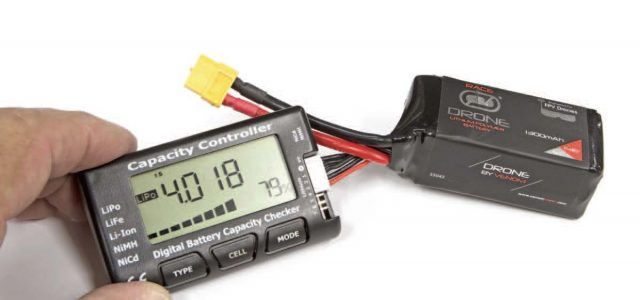How can I get the most out of my LiPo battery, and when do I know that it’s time to replace it?
Answer: LiPo batteries need special care in the way they are charged, discharged, and stored. High-quality LiPo compatible chargers can be expensive, but making the investment is worthwhile.
LiPo batteries average about 400–500 cycles depending upon how they are used and maintained. It is good practice to date and label battery packs when you first acquire them. This will help you keep a record of each pack.
Record the internal resistance of the LiPo when the battery is new. Internal resistance is measured with computerized chargers that feature built-in balance boards. Write each pack’s initial internal resistance directly on the pack with a permanent marker. (Cover the ink with clear tape so that it won’t rub off.) Compare the internal resistance after each flight. If the number starts to rise considerably, the pack should be replaced.
A visual examination of your battery pack can also help you determine if it must be replaced. Is the battery puffy or swollen? When cells are unbalanced, they discharge faster than others, causing the battery pack to balloon and reach the limits of its encasement. Logging the following information and comparing it each time you fly will help you evaluate the performance of your battery pack:
Voltage: Are the cells holding less voltage?
mAh: Is the pack holding less mAh capacity?
Run time: Is there a noticeable decline in run time and performance?
If the answer to any of these questions is “yes,” then the pack is getting weaker and performance will start to degrade. It’s a good time to plan to replace that pack.
It’s also a good idea to record the temperature of each cell after a flight. As battery packs age, their internal resistance increases, which lowers the C rating and makes them run warmer. As a general rule, if you can’t hold a LiPo pack tightly in your hand after using it because it’s too hot (and this wasn’t the case when it was new), you should consider replacing that pack.
A LiPo-compatible charger helps balance the voltage of each cell in a battery pack, ensuring that each cell discharges the same amount of voltage. This will keep your battery from accidentally swelling.
LiPo batteries are charged using a system called “Constant Current/Constant Voltage” (CC/CV). A LiPo-compatible charger also keeps the current constant until the battery reaches its peak voltage, then it maintains that voltage while reducing the current to extend the life of your pack.




















Is there any way to fix a puffy battery?
No not really, some people just continue to use them, but there is really no way of fixing them.
John,
will cycling the battery, discharge/balance/storage help in reducing the continued growth of the “puff”
Once the battery starts to puff, it is no longer stable. Do not continue to use it or charge it!